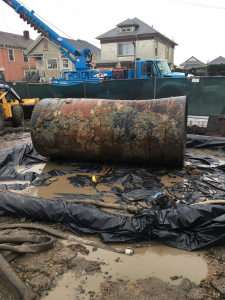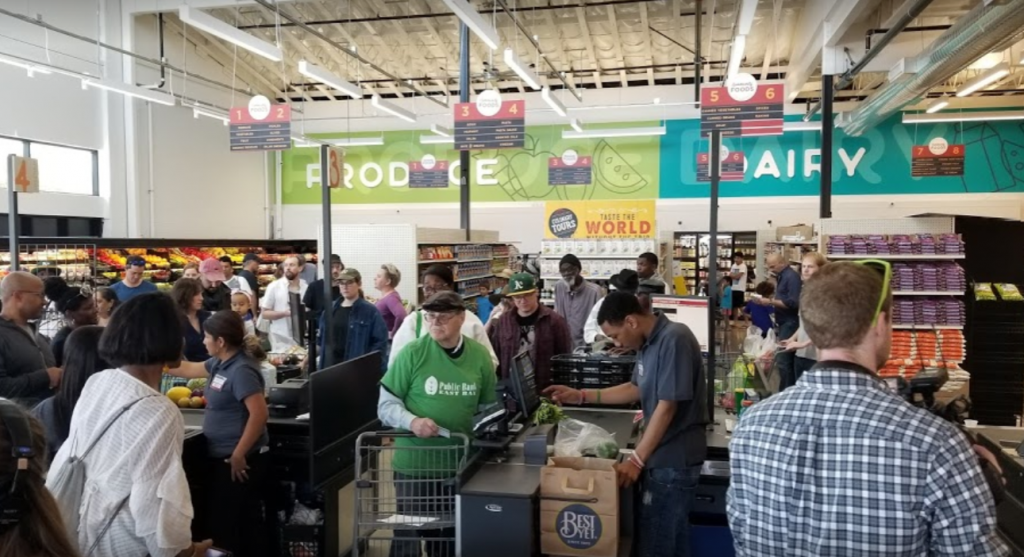
Brownfields to Healthfields: Brownfields as Neighborhood Health Opportunities
Brownfields are properties where existing or believed contamination from previous uses influences redevelopment, such as gas stations and dry cleaners. With an estimated 450,000 brownfields scattered across the United States, productive redevelopment is a primary goal for many community leaders and city planners. Yet redevelopment can be a difficult process to plan, navigate, and fund. Brownfields pose significant challenges to communities as a result of difficulties related to the potentially high costs of environmental clean-up, and identifying end-uses. However, the benefits of brownfield redevelopment are recorded far and wide, yielding economic, environmental, and health benefits. By utilizing already-built-on land, tapping into existing infrastructure such as plumbing and roads, and promoting infill development, brownfield redevelopment can protect undeveloped green space, reduce vehicle miles traveled, and reduce urban sprawl. However, perhaps the most transformative effect of brownfield redevelopment is the creation of “healthfields,” or the redevelopment of brownfields to promote health in the very communities previously affected by pollution or contamination at the site.
While brownfields lie idle, they have the potential to negatively impact public health by polluting local air and groundwater supplies, which burdens local neighborhoods with health challenges. Further, they may deplete local tax bases, decrease surrounding property values, and attract illegal activity. Living in proximity to derelict and disinvested sites may also affect mental health and a sense of safety for community residents. With brownfields disproportionately burdening marginalized, low-income, and high minority neighborhoods, it is important to redevelop them in a timely manner, to focus on beneficial and equitable reuse of sites, and to recognize the potential they hold for transforming communities and increasing community health.
Contaminated land is not randomly distributed, as any map of derelict sites in any major American city will show. The fact that where you live has a definite effect on life expectancy has been recorded widely. Brownfields are often located in economically depressed areas and in communities of color. It is imperative for planners to understand brownfields in this context and to prioritize the beneficial reuse of brownfields in these neighborhoods. While redeveloping brownfields can be challenging, the proximity of these sites to underserved communities creates massive potential to positively impact local community health. Studies show that increased community resources, access to safe sidewalks, open green space, and parks, among other things, can increase mental and physical wellbeing. Brownfields can be transformed into parks and green spaces, health clinics, community gardens, and food pantries to bring these health benefits to the local community. Redeveloping brownfields into end-uses that will increase neighborhood wellbeing is a tool to revitalize neighborhoods challenged by disinvestment, environmental pollution, and lack of resources. By not only removing environmental degradation but replacing hazards with health resources, the Brownfields to Healthfields initiative has the potential to drastically transform communities.

Map showing disparities in life expectancies by different neighborhoods in Chicago.
Image source: Center on Society and Health, 2015
Using brownfields to promote health can take numerous shapes and forms. This is why the Brownfields to Healthfields approach should be considered for all brownfield properties and specifically prioritized in burdened neighborhoods. Successful Brownfield to Healthfields projects include:
Parks and Open Green Space: Gasworks Park in Seattle, WA, a former gasification plant that now serves as an exercise area and beautiful family gathering place.

Gasworks Park, Seattle, WA. Image source: Wikipedia
Community Health Clinics: States, including Florida, California, Colorado, and Oregon, have successfully redeveloped brownfield properties into healthcare facilities with promising results.
Food and Urban Agriculture: Brownfields in West Oakland, CA have been redeveloped into a community food market to provide access to healthy food to residents formerly living in a food desert. In Philmont, NY, the community has redeveloped former gas stations into a food truck cafe and a food cooperative.


An underground storage tank is removed during the redevelopment of a brownfield site in West Oakland, CA, now the location of a food market. Image source: Center for Creative Land Recycling
In order to effectively drive positive change, it is vital to involve communities in the planning process. Community participation workshops should be held to identify the best end-use and to ensure that the community will ultimately benefit. Community partnerships will not only identify the best use for a former brownfield property but also lead to greater awareness of the new health resources within the community.
Consider health fields for the redevelopment of your brownfield property, especially in neighborhoods lacking access to open space, medical centers, or healthy food. View CCLR’s State Resources page for funding and other resources for redevelopment projects.
For more information on health fields, view our video here:





